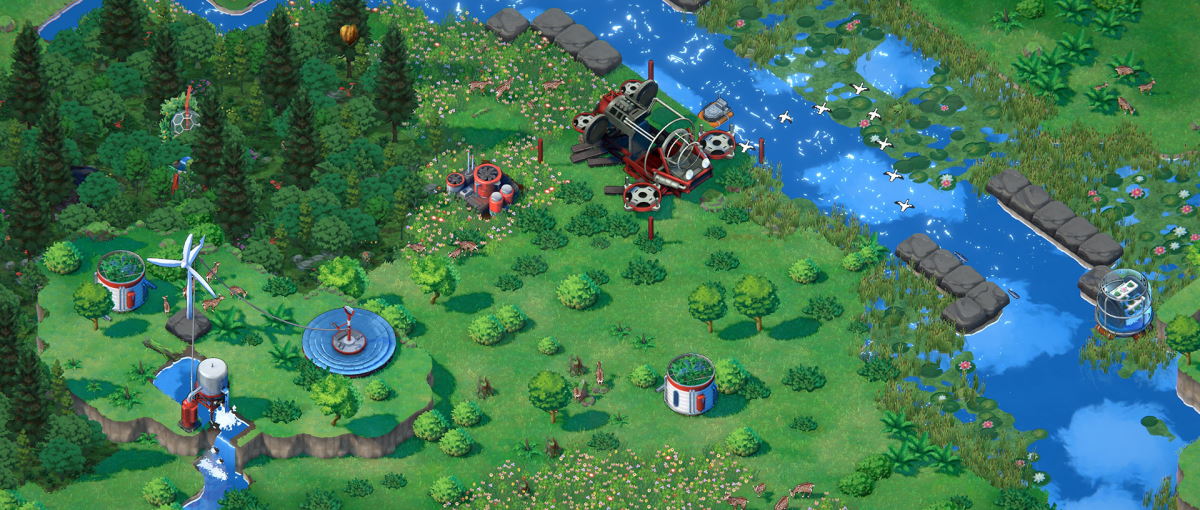

The first map is a simple matter of placing turbines and scrubbers, laying the foundation for mechanics that increase in complexity. Your first step is generally to build turbines, or some equivalent, to provide electricity, which will power your toxin scrubbers that restore the contaminated soil or water, letting you continue building. The entire game is played from an isometric perspective on a grid, and you’ll quickly learn that the placement of your buildings is absolutely vital, not just because of your short-term goals, but because of how you’ll need to recycle everything at the end of each map. Devolver DigitalĮssentially, each map is split into a three-step process, and you’ll have to meet some kind of requirement to progress. Terra Nil’s gameplay often requires you to control the temperature and humidity, using machines to start controlled burns.


The loose structure works to Terra Nil’s advantage, as the mystery only adds to the calm and silent aesthetic. The game is intentionally cryptic about its story and setting, seemingly suggesting that you’re working to restore an Earth that’s been decimated by some kind of apocalyptic climate event. Terra Nil’s campaign is split up into four different zones, each of which has a randomly generated map for you to work your restoration magic. Its strong environmental message is backed up by a gorgeous aesthetic and tremendously chill vibe that gives a nice reprieve from all of 2023’s abundance of over-the-top action. It’s a fascinating game that uses the framework of a city builder but ultimately ends up feeling like a puzzle game more than anything. You can’t help but smile when, after so much time spent transforming a barren wasteland into a thriving ecosystem, adorable waddling penguins emerge to brighten the scenery.ĭevolver Digital's Terra Nil is billed as a “reverse city builder” where instead of building cities, you’re restoring desolate environments, creating biomes, and bringing nature and animals back through the use of advanced technology.


 0 kommentar(er)
0 kommentar(er)
